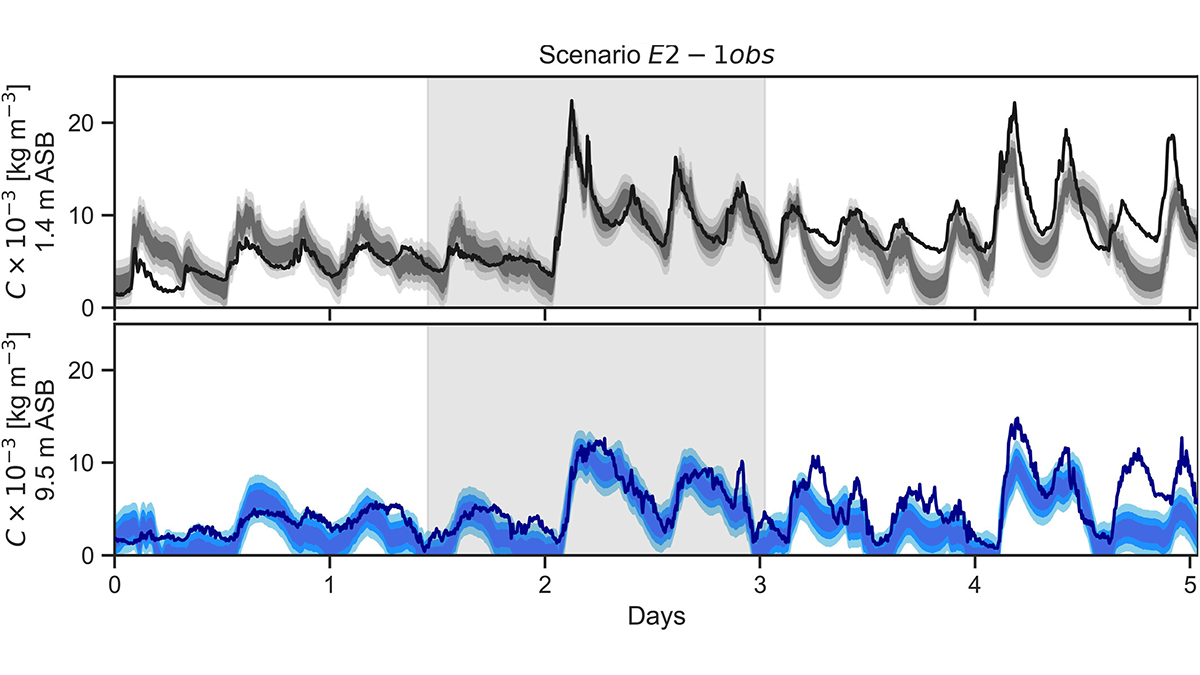Editors’ Highlights are summaries of recent papers by AGU’s journal editors.
Source: Journal of Advances in Modeling Earth Systems
In a new study, Edge et al. [2023] use Bayesian inference methods, specifically Markov Chain Monte Carlo (MCMC) sampling, to infer posterior distributions of key unobserved (latent) model parameters with uncertainty quantification. While MCMC methods are standard, the approach is novel in its application to real world examples of sediment transport on the continental shelf including complex bottom boundary forcing and response. The method was implemented using a 1-D advection-diffusion model of sediment transport, a task made more difficult by the incorporation of unsteady forcing, with three case studies of increasing complexity considered.
The work was motivated in part due to the difficulty of obtaining direct in-situ measurements of the required latent parameters in deep ocean environments. Their approach demonstrates that information on difficult to observe parameters can be inferred based on easily obtainable tracer measurements e.g., current velocities and suspended sediment concentrations from acoustic backscatter. Their method is readily generalizable to more complex models and represents a true advance in the use of Bayesian methods for estimating parameters in complex numerical models. It should generate considerable interest in the field and motivate the uptake of Bayesian statistical methods for parameter estimation more broadly.
Citation: Edge, W. C., Rayson, M. D., Jones, N. L., & Ivey, G. N. (2023). In situ estimation of erosion model parameters using an advection-diffusion model and Bayesian inversion. Journal of Advances in Modeling Earth Systems, 15, e2022MS003500. https://doi.org/10.1029/2022MS003500
—Terence O’Kane, Associate Editor, JAMES

